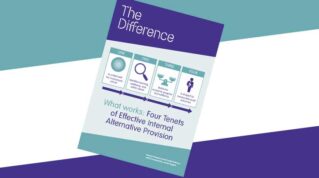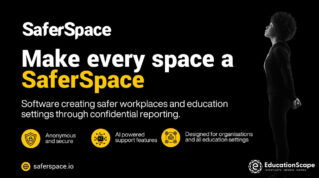Most “information reports”, which schools must publish to tell parents about the SEND support they offer, are harder to read than Stephen Hawking’s A Brief History of Time, a study suggests.
Under the SEND code of practice, schools are required to publish information on their websites about the implementation of special needs policies. This covers things like identifying pupils with additional needs, how parents are consulted and what they teach.
Schools are required to “ensure that the information is easily accessible by young people and parents and is set out in clear, straightforward language”. But a sample of 50 random reports by Schools Week suggests that this is not the case.
Using readability software on Microsoft Word, we found two-thirds of reports were actually deemed to be harder to read than the first part of Hawking’s 1988 book on space and time.
Although meant to be for readers with no prior knowledge of physics, the book covers topics such as the origin of the universe, quantum field theory and general relativity.
Aaron King, a SEND advisor, said: “We ought to be able to explain SEND to parents more clearly than someone explains cosmology.
“In practice, the rule means they should be written so that a year nine pupil who has learning difficulties can read it.”
Schools Week surveyed websites from a random selection of mainstream schools in England and measured the reports against the Flesch reading ease test, with text scoring 100 being the most accessible.
A score between 60 and 70 is rated as “standard”, with anything above classed as easy to read. Scores below 60 are “fairly difficult” and “difficult”.
The first 2,500 words of Hawking’s book were given a rating of around 50 by the software.
Our analysis of schools found 66 per cent of reports were rated below this, with the rest rated between 50 and 60. None were classed as “standard”.
King’s own analysis of 250 mainstream schools, in Yorkshire and the Humber and south-east England, delivered similar results.
One report, deemed hard to read, stated: “High quality first teaching and additional interventions are defined through our annual dialogue across the school contributing to our provision management approach.”
King added: “We should be writing to explain how we’ll give a great education to your child who has SEND. We are not writing terms and conditions of an insurance policy.”
Ellie Costello, executive director at parent support organisation Square Peg, said that, if a family cannot access information in plain English, they “may feel the school can’t meet their child’s needs”.
She added: “Often you’ll see the school that is the most successful on inclusion will have the most accessible and easy to understand information.”
The previous government had committed to explore whether “the expectations about the contents of the SEN information report could be developed further to improve transparency”. It is unclear what work, if any, was done on this.
But last month schools minister Catherine McKinnell said that, as part of the DfE’s work on “long-term options for improving the SEND system, we will explore the role of SEND information reports”.
King added: “While this is just one aspect of the SEND improvements, it’s one of the quickest and least expensive.”
It is not just the text that matters, but the presentation of the report too, experts said.
Natalie Packer, a former SENCO now SEND consultant, said the best examples include visuals such as pictures of the SEND team and nurture rooms “to bring it to life a little more”. Listing key information in simple-to-read bullet points can also help.

Packer added that getting parents involved in reviewing reports is also “really important”.
King said a great report should be colourful and include accessible fonts, for example Arial, Calibri or Tahoma, rather than handwriting script.
Some schools are even doing videos explaining their support, alongside the written report.
Bellfield Junior School, in Birmingham, already has a shortened version for parents, but is looking to simplify it down to a one or two-page report. Some parents at the school struggle with literacy themselves.
“There isn’t a lot of guidance out there, so we’re trying to think of ways of keeping it as simple as possible despite needing to include lots of information,” said headteacher Nigel Attwood.
Margaret Mulholland, SEND and inclusion specialist at the ASCL school leaders’ union, said guidance which helps schools to improve the content and presentation of the reports would be welcome.
“Schools do their best to ensure SEN information reports are as transparent and accessible as possible, though naturally they will cover some complex topics.”
The DfE was approached for comment.
















Your thoughts